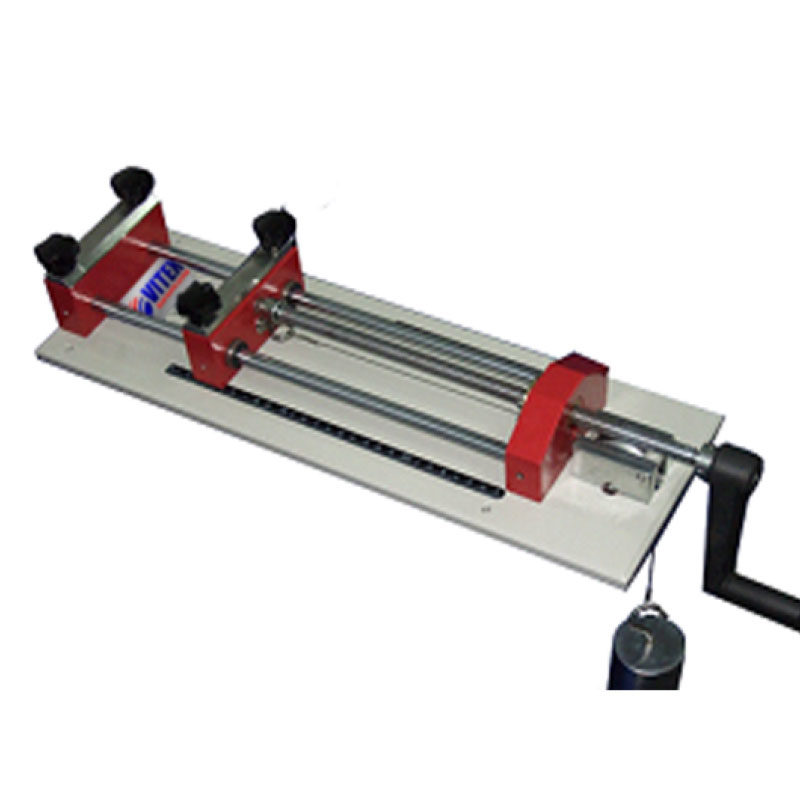Application
Fryma Extension Tester, to simply and economically determine the stretch and recovery of textile fabrics, both knitted and woven. The apparatus consists of a loading frame with clamps and a screw tensioning device, one 3kg and loading weights and sample cutting templates.
Clamp the test sample. By rotating the shaft in the back anti-clockwise, the moving clamp is moved back to stretch the sample, so the stretch rate can be read directly on the scale, and both knitted fabrics and woven fabrics scales can be read. By pressing the knob on the right side, the moving clamp can be returned back to initial position quickly
Standards
BS 4294
Weight
35 Kg
Dimensions
360 x 170 x 170mm (L x W x H)



